The mid-20th century saw the dramatic rise of the American suburbs, promising a new ideal of homeownership, family life, and community. With this new lifestyle came a unique set of needs and aspirations, shaping the contents of suburban homes and garages. Many items that were once considered absolute necessities for navigating this suburban dreamscape have now faded into obsolescence, replaced by technological advancements, shifting cultural norms, or simply a different way of life. From keeping up with the Joneses to maintaining that perfect lawn, these items tell a story of a distinct era in American history. Let’s take a nostalgic journey and explore 14 items that were once suburban essentials, now largely collecting dust or gone entirely.
1. Rotary Push Lawn Mower
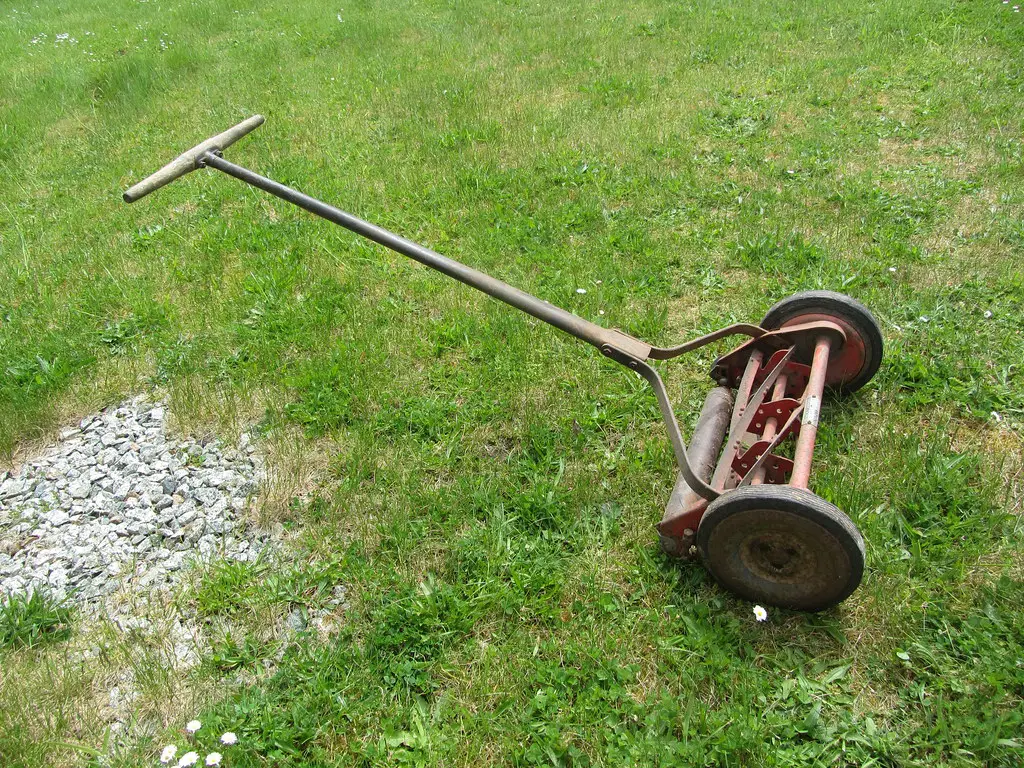
Before the roar of gas-powered engines dominated weekend mornings, the suburban soundscape included the rhythmic snip-snip-snip of a manual rotary push lawn mower. These environmentally friendly (though labor-intensive) machines were a staple for maintaining the pristine lawns that were a hallmark of suburban pride. They required a good workout but offered a quieter, more precise cut.
Keeping a well-manicured lawn was a badge of honor in many suburban neighborhoods, and the push mower was the primary tool for achieving this. As noted by Popular Mechanics, manual reel mowers were the standard for residential lawns for many decades before the widespread adoption of gasoline-powered models, embodying a simpler, more physically engaged approach to yard work. While still used by some for small lawns or for environmental reasons, they have largely been superseded by their motorized counterparts.
2. Drive-In Movie Speaker

For decades, the drive-in movie theater was a quintessential suburban entertainment experience, offering families a unique way to enjoy films from the comfort of their own cars. The clunky, often metallic speaker, hung precariously on the car window, was your only portal to the cinematic soundscape. The distinct, slightly tinny audio was part of the charm.
The ritual of finding the perfect parking spot, rolling down the window, and hooking up the speaker was a cherished memory for many suburbanites. It fostered a sense of community and provided an affordable, family-friendly outing. According to an article from The Atlantic, drive-in theaters reached their peak popularity in the late 1950s and early 1960s, becoming an iconic symbol of suburban leisure and a significant part of the American experience for many families. With the decline of drive-in theaters due to rising land values and the proliferation of multiplexes and home entertainment systems, these speakers are now rare collector’s items.
3. Home Encyclopedia Set

Before the internet put the world’s knowledge at our fingertips, a multi-volume encyclopedia set was the cornerstone of any respectable suburban home’s library. Often displayed prominently in the living room or den, these imposing tomes were the go-to resource for homework assignments, settling family debates, and satisfying general curiosity. Owning a full set was a sign of intellectual aspiration.
Families would spend hours flipping through the pages, marveling at the illustrations and absorbing information. As highlighted by TIME Magazine, encyclopedia sales soared in the post-war suburban boom, as parents invested in educational resources for their children and showcased their commitment to knowledge and culture. The sheer convenience and accessibility of online encyclopedias and search engines have rendered these magnificent sets largely obsolete, often found gathering dust in attics or at yard sales.
4. Telephone Table with Built-in Seat
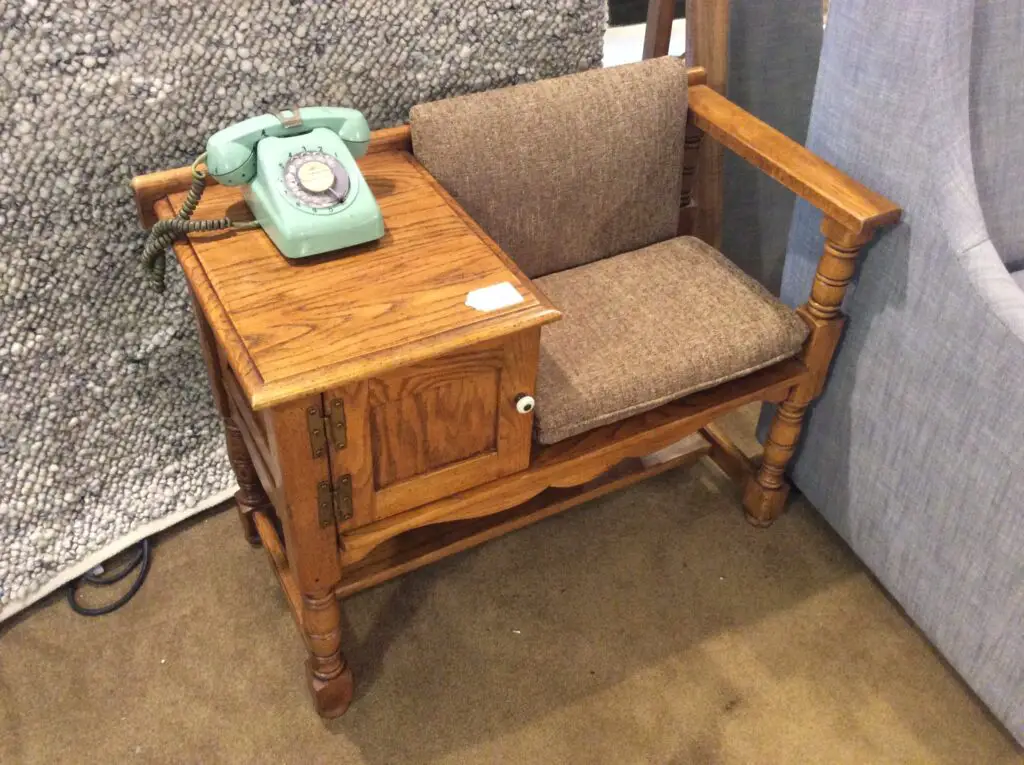
In an era before cordless phones and mobile devices, the telephone was a stationary object, often housed on a dedicated telephone table, sometimes with a small, attached seat. These compact furniture pieces were typically placed in hallways or living rooms, becoming the central hub for household communication. Conversations were often longer and more deliberate when tied to a specific location.
The telephone table facilitated private conversations while still being accessible to other family members. It was a physical representation of how communication flowed within the home. House Beautiful has featured these tables in retrospectives on mid-century design, noting their functional elegance and how they served as a focal point for communication in an era when the phone was a fixed appliance rather than a portable device. With the advent of portable phones, these specialized furniture pieces lost their purpose and are now primarily found as charming vintage decor or in antique shops.
5. Color TV Guide Magazine
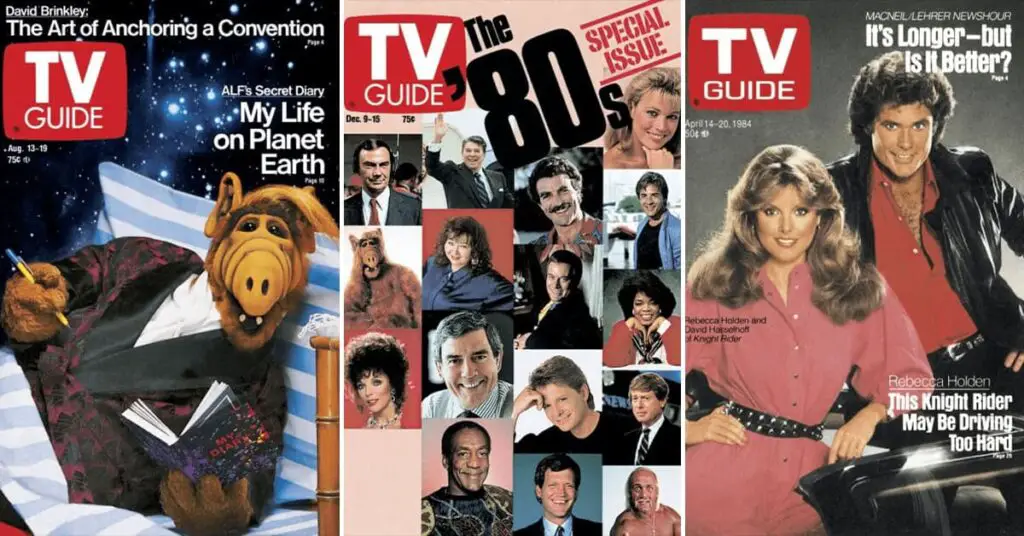
Before on-screen program guides and streaming services, navigating the vast sea of television channels (even if it was only a handful) required a weekly subscription to the TV Guide magazine, particularly the “color” edition that distinguished itself by printing station logos in color. This slim publication was essential for planning your evening’s entertainment and marking your must-watch shows.
Families would gather around the TV Guide, circling their favorite programs and coordinating their viewing schedules. It was a shared experience that brought families together around the television. The digital revolution in television broadcasting and the rise of on-demand content have made the physical TV Guide magazine a nostalgic relic, often found in doctor’s offices or forgotten in magazine racks of yesteryear.
6. Stereo Console
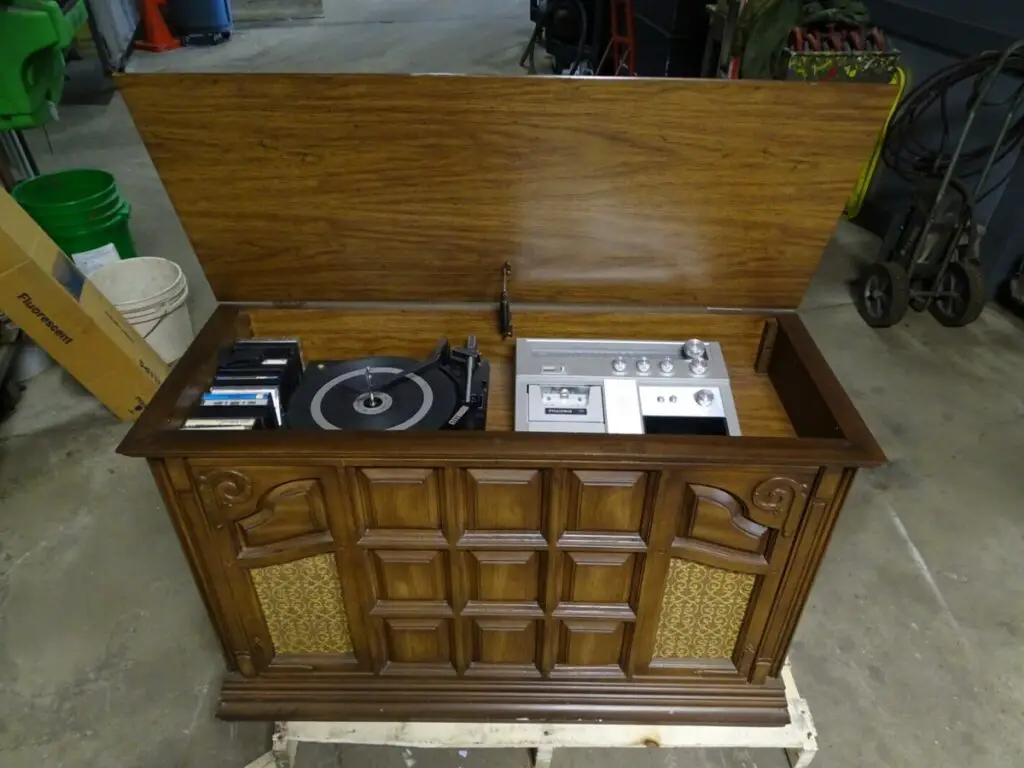
The stereo console was the ultimate entertainment centerpiece in many suburban living rooms. These imposing pieces of furniture, often crafted from fine wood, housed a record player, an AM/FM radio tuner, and sometimes even an 8-track or cassette player. They delivered rich, room-filling sound and were a source of pride for audiophiles.
Gathering around the stereo console to listen to records or the radio was a common family activity, fostering a shared love for music. It was a symbol of leisure and sophisticated living. While high-fidelity audio remains popular, the components have become separated and miniaturized, making the all-in-one stereo console a charming but impractical anachronism.
7. Portable Bar
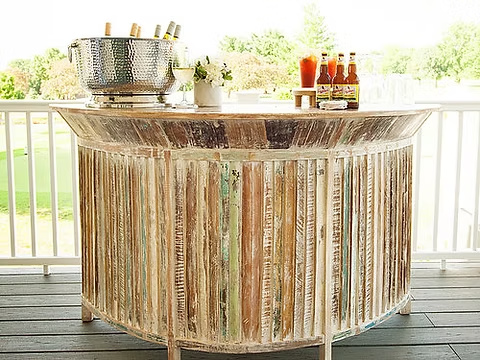
Entertaining was a cornerstone of suburban social life, and the portable bar was an indispensable accessory for many hosts. These often wheeled carts, complete with bottle holders, ice buckets, and sometimes even built-in shakers, allowed hosts to bring the cocktail hour directly to their guests, whether on the patio or in the living room. It symbolized sophisticated hospitality.
The portable bar facilitated social gatherings and impromptu celebrations, making it easy to serve drinks and mingle with guests. It was a tool for gracious entertaining and a sign of a well-equipped host. While home entertaining remains popular, dedicated portable bars have largely been replaced by built-in wet bars, kitchen islands, or simply less formal drink stations.
8. Slide Projector and Screen
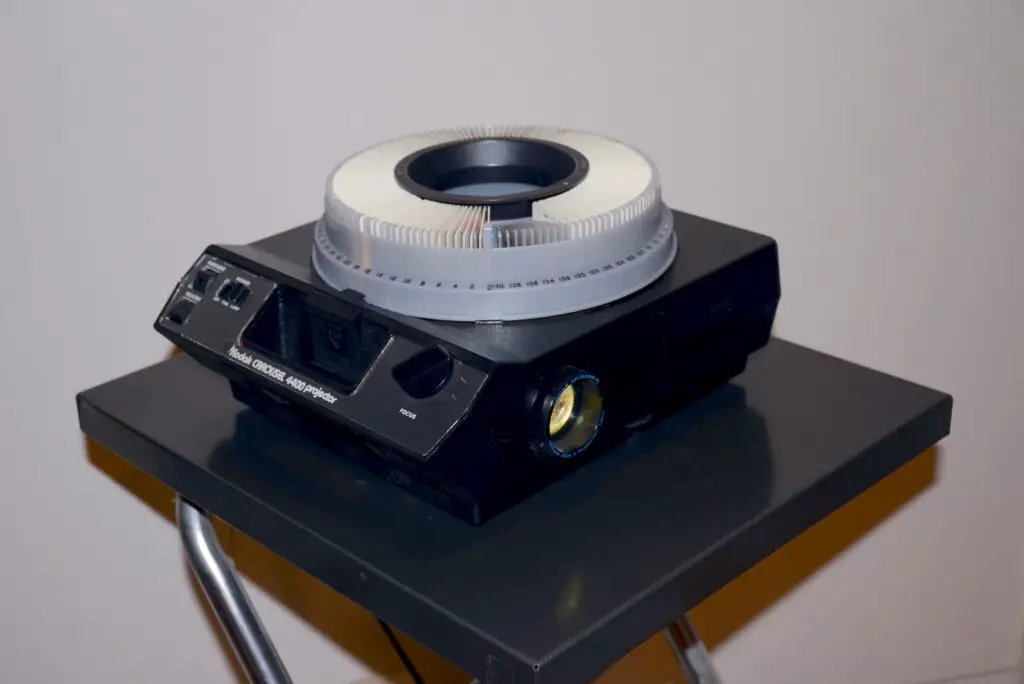
Before digital cameras and smartphones, family memories were often captured on photographic slides. The slide projector and a pull-down screen were essential for reliving vacations, holidays, and special moments. Gathering around in a darkened room, watching the images appear on the screen, was a shared, almost ceremonial experience.
The anticipation of seeing the slides projected onto the screen added to the magic of revisiting memories. It was a tangible way to share and preserve family history. The ease of digital photo viewing on TVs, computers, and tablets has rendered the slide projector and screen largely obsolete, their dust-covered cases now only occasionally unearthed for a nostalgic trip down memory lane.
9. Fondue Pot Set
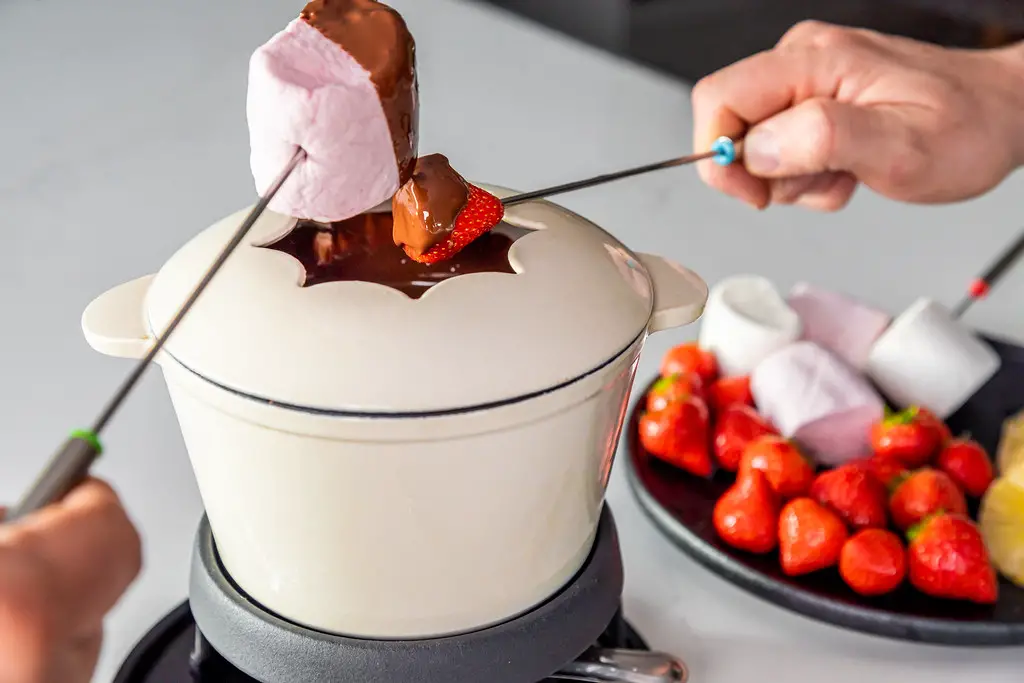
Fondue was a wildly popular dining trend in the suburbs during the 1960s and 70s, making the fondue pot set a must-have for entertaining. Whether for cheese, oil (for meat), or chocolate, these sets, often complete with burners and long-stemmed forks, offered a fun, interactive, and communal dining experience. It was a fashionable way to host a dinner party.
Fondue parties were a social event, encouraging conversation and interaction as guests cooked their own food at the table. It was a novel and somewhat exotic culinary adventure. While fondue still exists, its heyday as a suburban essential has passed, replaced by a wider variety of dining trends and less specialized cooking equipment.
10. Manual Can Opener (Wall-Mounted)
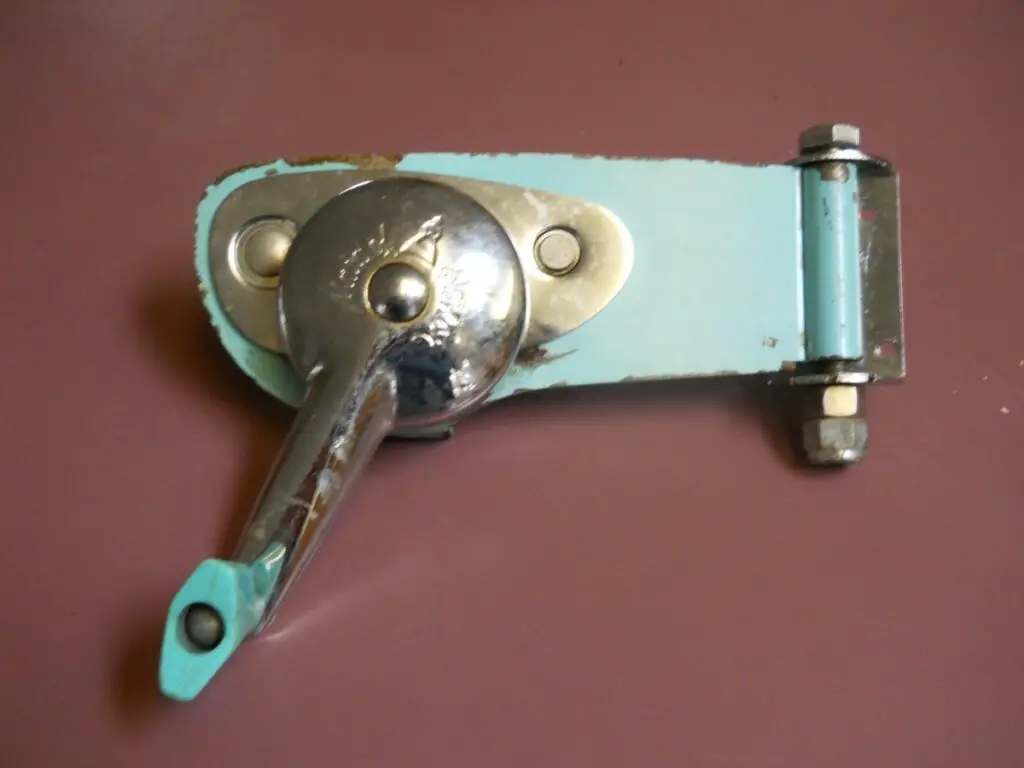
Before electric can openers became commonplace, the sturdy, wall-mounted manual can opener was a fixture in many suburban kitchens. Permanently attached to the wall or under a cabinet, these robust devices provided reliable and effortless can opening, a significant improvement over handheld models for families consuming a lot of canned goods. Its fixed position made it always ready for action.
The satisfying clunk-clunk-clunk as the gears engaged and the can lid was peeled away was a familiar kitchen sound. It symbolized efficiency and practicality in meal preparation. While handheld manual can openers are still common, the more permanent wall-mounted versions have largely disappeared, replaced by convenient electric countertop models or even pop-top cans.
11. Record Player (Standalone)
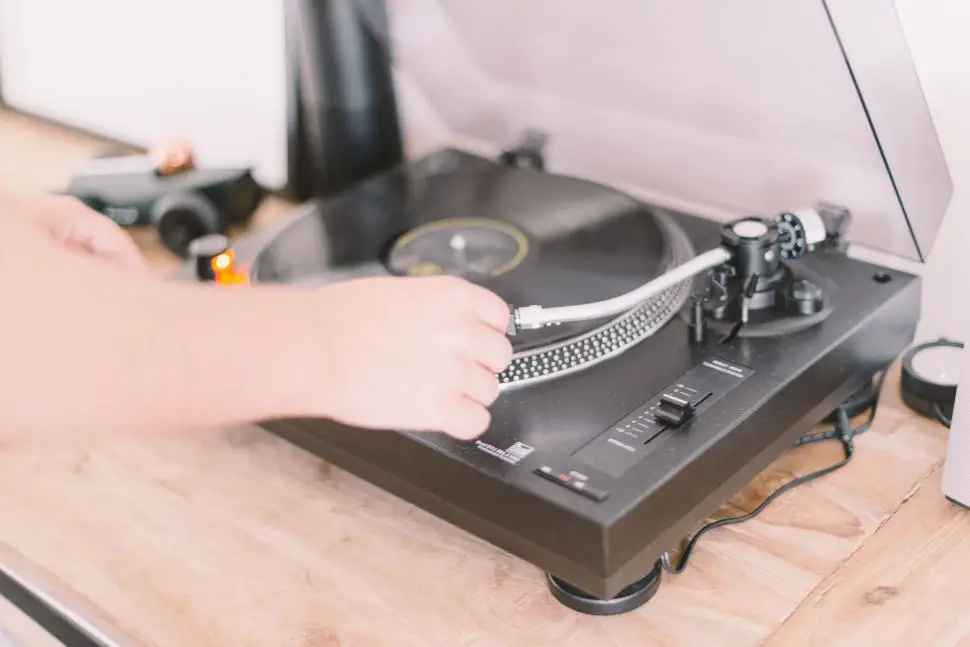
Beyond the integrated stereo console, many suburban homes also featured standalone record players, allowing for greater flexibility in music listening. These independent units, often portable, were perfect for kids’ rooms, basements, or for taking to a friend’s house. The ritual of carefully placing the needle on the vinyl was a core part of the musical experience.
Record players brought music into every corner of the suburban home, from dancing in the living room to quiet listening in a bedroom. They fostered a personal connection to music and the physical format. While vinyl has seen a resurgence, the standalone record player is now more of a niche item for enthusiasts, overshadowed by digital music players and streaming services.
12. Slide Rule

For suburban students before the widespread adoption of electronic calculators, the slide rule was an indispensable tool for mathematical and scientific calculations. This analog mechanical computer, often carried in a stylish leather case, was a symbol of academic prowess and a necessary aid for homework in subjects like physics and engineering. Mastering its use was a mark of intelligence.
Learning to operate a slide rule required precision and an understanding of logarithmic scales, fostering a deeper engagement with mathematical principles. It was a vital tool for problem-solving in an era without digital shortcuts. The ubiquitous presence of affordable electronic calculators, and later computers, quickly rendered the slide rule an educational dinosaur.
13. Picnic Basket Set

The suburban ideal often included idyllic family outings to parks, lakes, or scenic overlooks, and the picnic basket set was an essential companion. These woven baskets, often complete with matching plates, cups, cutlery, and a thermos, made outdoor dining a charming and organized affair. It encouraged impromptu adventures and quality family time.
Packing a picnic basket was an act of preparation and anticipation for a fun day out. It facilitated a leisurely and communal meal experience in the fresh air. While outdoor dining remains popular, the specialized picnic basket set has largely been replaced by insulated cooler bags, disposable containers, and a more casual approach to outdoor eating.
14. Cigarette Ashtrays (Numerous)

While not a tool in the traditional sense, the proliferation of cigarette ashtrays was a stark indicator of a pervasive social habit in mid-century suburban homes. It was common for every room, including bedrooms and even bathrooms, to have multiple ashtrays, often decorative and made of glass, ceramic, or metal. They were a necessary accessory for accommodating smokers.
The presence of numerous ashtrays reflected a time when smoking was widely accepted and even fashionable, a common practice during social gatherings and daily life. As public awareness of the health risks associated with smoking grew and social norms shifted, the need for ubiquitous ashtrays diminished dramatically. Now, they are largely absent from most homes, a testament to changing health perspectives and societal habits.
